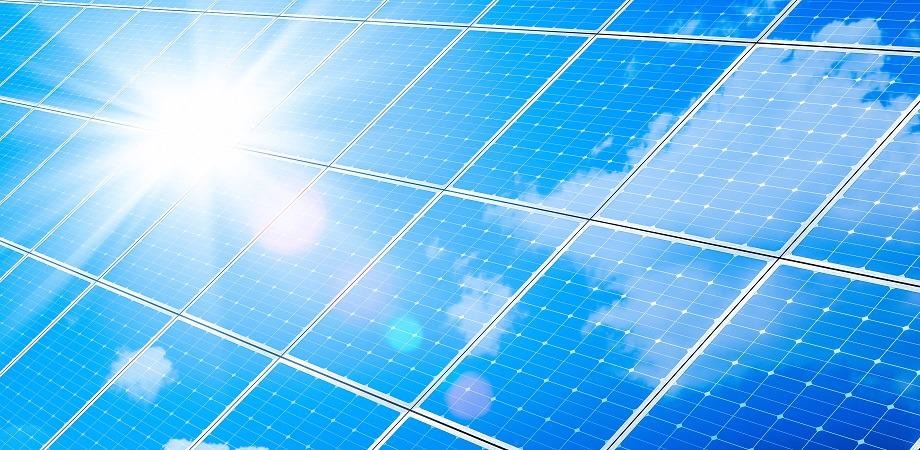Solar photovoltaics (PV) is the main turning point in the shift toward a sustainable energy economy. The International Renewable Energy Agency (IRENA) roadmap proposes that by 2050, electricity production from PV should realize 43% of the total installed power capacity.
 Integration of a Lambertian spectrum splitter into perovskite-silicon tandem solar cells enables a significant increase in efficiency. Image Credit: Shutterstock (1712387749).
Integration of a Lambertian spectrum splitter into perovskite-silicon tandem solar cells enables a significant increase in efficiency. Image Credit: Shutterstock (1712387749).
This can soon become a reality by decreasing the cost of PV systems and boosting the efficiency of solar cells, which would allow large-scale compact PV installations.
Therefore, a new study published in the Journal of Photonics for Energy (JPE) examines the efficiency gain offered by tandem solar cells wherein several semiconductors with diverse energy gaps are arranged atop one another, with a spectral splitter added between the top and bottom terminals.
Why this specific design? It became apparent that tandem solar cells are responsive to a wider region of the sunlight's spectrum. This responsiveness allows them to collect light efficiently and possibly attain a total efficiency higher than the theoretical boundary of conventional solar cells.
However, they usually deal with ineffective light trapping and management due to parasitic light absorption in inactive layers and reflection between layers. The latest studies have looked into these issues, yet the idea of spreading sunlight in the tandem subcells with controlled spectral splitting is not adequately investigated.
This is where a team of researchers from The Netherlands, who carried out the study, come in. They engineered a two-terminal tandem solar cell consisting of a perovskite top cell and silicon bottom cell and introduced spectral splitters between them.
In PV research, every digit that can be gained in cell efficiency is crucial. Adding a spectrum splitting interlayer can help us harvest the maximum current and voltage by splitting the incident sunlight into low- and high-energy spectral bands and distributing them effectively among the top and bottom cells.
Albert Polman, Study Lead, NOW-Institute AMOLF
Polman observes that adding spectral splitters can also pave the way to higher throughput in fabrication, economical solar cells and lower toxicity per unit cell area. Moreover, they can increase the range of tandem cells for applications in the photoelectrochemical splitting of water.
Polman's team analyzed two types of spectral splitters, namely "Lambertian" and "planar" splitters, in their research. The planar splitter behaves like a mirror, reflecting the light right back to the top cell to allow it to be captured there.
On the contrary, the Lambertian splitter reflects light in an angular manner so that it has to complete a much longer path via the solar cell, and hence can be captured without difficulty.
Based on their calculations, when a spectral splitter is present, industrially valid top cells with energy gaps of 1.7 eV and higher demonstrated a 5-to-6 percent gain in absolute efficiency in the limit of infinite thickness for a 500-nm thick top cell.
Their predictions also showed that selecting a Lambertian spectral splitter over a planar splitter considerably increases the efficiency enhancement.
Although the study is theoretical, the results are economically appealing. As long as there is no substantial splitting performance loss with upscaling, and the production steps are of comparable costs, the efficiency gain per layer of the perovskite/silicon coupled with a Lambertian spectral splitter is inside an economically competitive range.
Siva Sivoththaman, Associate Editor of JPE and Director of the University of Waterloo's Centre for Advanced Photovoltaic Devices, suggests that the study makes a well-timed and unique contribution to photovoltaic cell designs based on perovskite/silicon tandems.
The idea put forward on embedded spectrum splitters is theoretically shown to result in significant efficiency gains, pushing the thermodynamic limits upward. Although a theoretical work, experimental parameters were used to reliably show how the Lambertian spectral splitter benefits structures with high-bandgap top cells.
Siva Sivoththaman, Associate Editor of JPE and Director of Centre for Advanced Photovoltaic Devices, University of Waterloo
Solar cells definitely need more time before they can substitute conventional energy sources. But this study provides optimism for their success in the future.
Journal Reference:
Neder, V., et al. (2022) Detailed-balance efficiency limits of two-terminal perovskite/silicon tandem solar cells with planar and Lambertian spectral splitters. Journal of Photonics for Energy. doi.org/10.1117/1.JPE.12.015502.